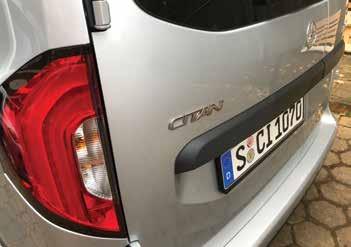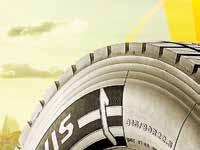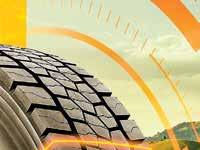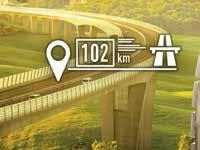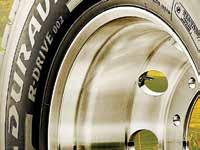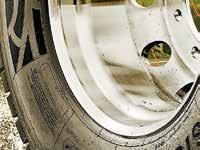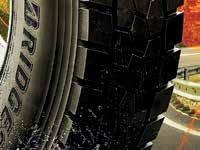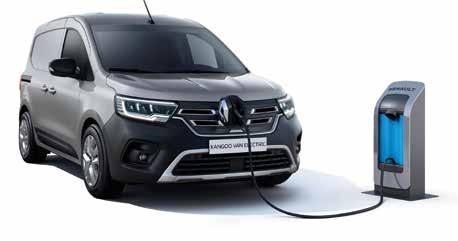
11 minute read
LCV LAUnCh PADS
Renault looks to extend emission-free van line-up with E-Tech and H2
Getting an insight to a new model line within an automotive brand is invaluable. having the opportunity to discover the design process, the innovation and technology created for the new vehicle is appreciated. Especially if it’s a light commercial vehicle. Built to purpose. A recent visit to Renault Group’s Light Commercial Centres near Paris, where the Renault Kangoo range is developed and produced, demonstrated that the future is green for the French marque.
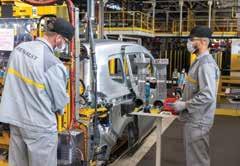
Green is indeed the colour and philosophy at Renault Vans, with its latest development being the reveal of the all-new Kangoo E-Tech (the next generation electric van, formerly known as the Kangoo Z.E.). In addition, hydrogen fuel cell technology is being worked on as a range distance extender for Renault’s van line.
Before the visit to the Maubeuge factory, where the new Kangoo is manufactured (alongside the new Mercedes-Benz Citan and new Nissan Townstar), and prior to test driving the Kangoo E-Tech near Aubevoye, Mark Sutcliffe, SVP, LCV Business Unit at Renault outlined the company’s current and future strategies. He stated that there were three main pillars involved - Enhancement and Renewal of its LCV line up, New Electrified Solutions and Services and Tailor-made Solutions.
Three new models are about to enter the marketplace, sporting Renault badging. For left hand drive countries only, a new compact van called the Express, which is basically a small Kangoo, is set for introduction, to be followed by the next series of the Kangoo and E-Tech versions. All new Kangoo E-Tech with its 44kWh battery, 75kW electric motor and 245Nm of torque can run up to 265 km between changes. Quick charging is provided also.
Also to come is the refreshed Trafic to bring the whole LCV family within the brand’s latest corporate identity.
Further advancements with its emission-free small and large vans have been achieved on the Kangoo and Master E-Tech, (with an electric Trafic to follow). More power and longer range distance have been achieved to meet customer requirements. But that’s not all! A new collaborative project, called Hyvia, has been established between the Renault Group and hydrogen/fuel cell solutions provider Plug-Power, “with the intention to contribute towards decarbonisation of mobility in Europe, with turnkey solutions,” as explained by Mark.
“The joint venture will develop and market light commercial vehicles with fuel cell technology, hydrogen charging stations, supply of carbon-free hydrogen, plus the maintenance and management of fleets,” he added.
Hyvia activities will be carried out at existing Renault factories in France. The first of the H2 Fuel Cell Vehicles to be brought to market will be based on the Renault Master van and platform, offering a 500km range with rapid recharging.
The third element is to enhance the Renault Pro+ initiative, with a more simplified accreditation process for the Renault LCV dealer network. Within that framework is an expansion of the Renault Tech provision, which accommodates van conversions and fit-outs ex-factory, through the dealer or fleet management company.
Philippe Caillette, Product Performance Leader, Small Vans, highlighted the merits of the new Express and Kangoo van: “Kangoo has been a success story since 1998 with over 4.3 million units sold,” he said, before going on to and enthusiastically describe the two rather special innovations developed especially for the Kangoo. “Open Sesame, is the widest door aperture in the small van market, [made possible] by removing the central B pillar.” Alas for Irish customers, this system is only available in left hand drive models currently.
Then there’s the Easy Inside Rack, a high mounted foldable ladder style rack for the easy transport and storage of long objects. Significant too, is the speciation of twelve high-tech driver assistance systems including a digital rear view mirror.
With six million vehicles produced since its foundation in 1971, the Maubeuge plant where the Kangoo is manufactured has benefited from a €450m investment to transform its processes and output to the highest levels. It includes new panel pressing machinery, robots and an extended paint shop and quality control lines. Remarkably, a newly made van rolls off the production line every minute.
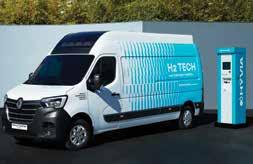
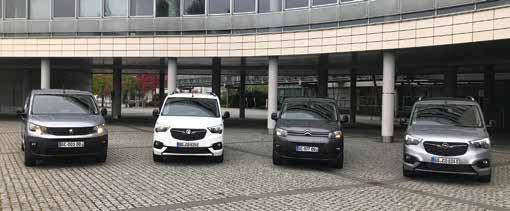
Stellantis Zero Emission LCV developments continue beyond BEV
Stellantis is still a relatively new name in the automotive business. The company was formed following the amalgamation of Groupe PSA and Fiat Chrysler Automobiles. As a result, some of the best brains in the automotive industry have come together to create vehicles to meet an evermore challenging future.
A recent stopover at Opel’s HQ at Russlesheim in Germany, provided a valuable insight into how Stellantis is building a footpath towards sustainable, emission-free commercial vehicle transport.
A key player globally in the commercial vehicle marketplace with seven brands, Stellantis enjoys number one status in Europe and South America and number three in North America. During 2020, 1.7 million CV units were sold by Stellantis brands.
While Stellantis is already pushing ahead strongly in the delivery of Battery Electric Vehicle (BEV) powered vans, further developments in its mid-sized vans are on the way. Fleet Transport got an insight into this technology and other related developments, as the company set out its objectives for the future. Challenges against moving towards a carbon less environment include the increase in urbanisation, the rise in e-commerce, national and city regulations, rising CO2 taxation and concerns over congestion and air quality.
Luca Marengo at the Stellantis CV Unit emphasised that the Stellantis approach towards carbon neutral is customer driven – with no compromises as its top commitment. “It’s our ambition to be worldwide number one in electric commercial vehicles and to be leader in customer experience from low TCO, better service and network,” he said.
“Customer expectations will be next when switching to electric, with the width and depth of range in line with our internal combustion engine versions. Also offered will be best in class capability, performance and productivity. And no compromises either with [our products] 100% conversion-friendly for body and accessory fittings.”
On these points, the technology and capabilities that Groupe PSA offers in its medium electric van products is carried over into its small panel electric van line-up.
The Citröen e-Berlingo, Peugeot e-Partner and Opel Combo-e electric vans come with a 100kW electric motor, 50 kWh battery pack, producing 136hp and 260 Nm and offering 275 km range distance. Two wheelbase and 2/3 seats can be chosen. Payload is not compromised with no impact in the load area and these vans can accommodate 800kg payload and a 750kg towing mass. Fast charging can be done in 30 minutes.
This development is truly a FrancoIberian project as the vans are made in Spain, as is the battery pack, while the electric motor is assembled in France. Similar to the diesel versions, numerous driver assistance systems are provided including the overload indicator. Internally, the instrument panel and the touch screen ensure that the driver is kept well informed regarding energy used and on tap. By alternating between the three driving modes, more kilometres can be gained if and when needed. Battery generation while braking on deceleration will help maximise range distance. Connectivity on board and through smart phone apps will further educate and guide the electric van driver.
Set for launch at the same time is the new Citröen e-Relay, Peugeot e-Boxer and Opel Movano-e. These large vans avail of a Turkish collaboration with BD Auto and comes with two battery capacities and up to 370 km city range from the 90 kW/280Nm motor. With different cab types available they can offer up to 2-tonne payload and 17m3 load space.
In parallel but using its own electric engineering technology is the new Fiat Professional eDucato. This innovation will be shared in due course within the Stellantis family.
Another green power source being explored is Hydrogen (H2). Dr. Lars Peter Thiesen, Manager Hydrogen & Fuel Cell Deployment Strategy is a veteran of this technology and highlighted the pluses of this development: “The unique combination of properties involved with Fuel Cell Electric Vehicles (FCEV) include; Zero Emission, Long Driving Range and Fast Refuelling.”
“FCEV offers zero emission solutions complimentary to BEV for customer who drive long distances frequently and/ or need to refuel quickly. The Stellantis customer profile here is fleet operators, with good load space offered from its mid-sized van range.”
While this technology has been worked on over the past two decades, the deployment of public funding and refuelling stations must be met, as well as the requirement to produce green sourced hydrogen. Germany and France will be first to market, with the former having 100 H2 refuelling stations to date.
For the Hydrogen powered Peugeot Expert, Citröen Dispatch and Opel Vivaro, Stellantis has decided on a mid-power dual concept – a 45kW Fuel cell, 4.4kg H2 tank and a 105kWh battery pack. Advantages include packing, performance, durability and cost with a range of 500 km achievable. Maximum power is 100kW and towing capacity is governed at 1,000kg.
‘Leasing rates of €600 per month are currently been offered in Germany for H2/ BEV powered Stellantis mid-sized van’
“Customer interest is high and the transition from demonstrator fleet to mass production is imminent,” concluded Dr. Lars.
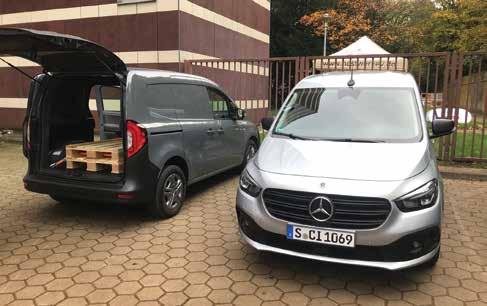
Mercedes-Benz introduce Citan II
*IVOTY award winning van to enter Irish market for first time
There is little resemblance between the first Citan van to the new second generation model which has just been revealed by Mercedes-Benz Vans. Other than the name, badging, and of course, ‘the Star’ symbol, new Citan is a totally new development and design, two years in the making. Manufactured at the Renault factory in Maubeurge, France alongside the Kangoo and new nissan Townstar on the same assembly line, Citan II is a true collaborative project between Mercedes-Benz and the Renault Group. Together, they worked on creating a vastly improved offering this time around with both the Kangoo and Citan providing their own unique features, equipment levels and character. while both brands may target different clientele, there are commonly shared elements, such as the drivetrain, body shell, platform and wheelbases.
While the Kangoo features the innovative Sesame door opening aperture which eliminates the necessity for a pillar, the Citan gains from many of the significant passive and safety developments from its passenger car cousins, as well as receiving the MBUX multimedia system.
Those with sharp styling eyes will notice the headlamps from the Mercedes-Benz B Class car are fitted on the Citan and that the grille is shaped like that of the Sprinter van.
Available initially in short wheelbase form, up to 2.9m3 load volume is provided and 782 kg of payload. In the cabin. the dash area carries on the Mercedes-Benz design theme, while the seats have additional cushioning for better ride comfort. Storage slots can be found all around the cabin. Any of 5 petrol and diesel engines can be specified, linked to a 6-speed gearbox, while an auto option is expected next year. Also set to arrive by Q2 2022 is the eCitan electric version. eCitan is to have a 44 kWh battery giving an estimated 285km range distance and quick charge facility, which can be done for up to 80% of the battery’s capacity in 40 minutes (via DC charging).
Highlighting new Citan’s nimbleness around town, the turning circle of the standard model is a mere 11.75m. A long wheelbase is planned for introduction next year.
Citan Tourer is the passenger version available with five and seven seats that
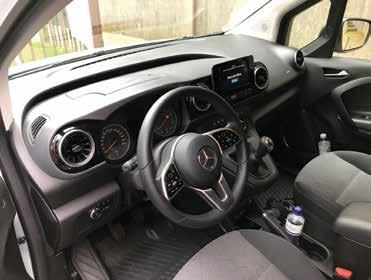
will be sold alongside the panel van types. It features a more refined chassis and various seating and storage arrangements, together with folding tray tables. There is better sound-proofing too, thanks to 11% thicker glazing.
We put both van and passenger versions of the new Citan to the test around the heart of Hamburg and its environs. As expected, not least from what we had heard from the developers present at the launch, Citan II drove extremely well - secure, safe and comfortable with good response from the steering and drivetrain. There were no issues with any aspect on how it looked, operated or performed.
The big news for Irish customers is that Citan II will be on sale here directly for the first time, with first models due in before next Summer ends.
